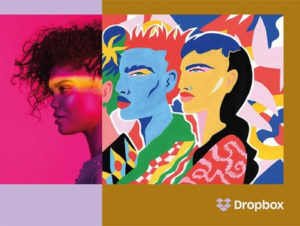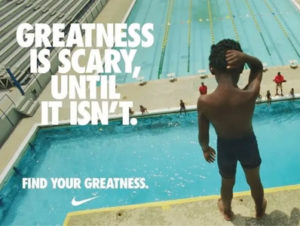The What And How Of Building A Unique Brand Visual Identity
In a visually saturated world, crafting a unique brand visual identity has become more crucial than ever before. It's not enough for your brand to merely exist; it must have a distinct and recognisable personality that sets it apart from the competition.
But what exactly is a brand visual identity, how do you go about building one that is truly one-of-a-kind, and where do you begin?
We know that it can be intimidating, so we’ve broken down the key information in this step-by-step guide to giving you the know-how to build a strong brand visual identity; one that will help you stand out for your competitors, connect with the right customers and weave your brand story throughout your content.
Whether you’re embarking on the creation of a visual identity system for the first time or seeking to rejuvenate your existing identity, this comprehensive guide contains all the essential information you require. Let’s delve right in.
What is visual brand identity?
Visual identity is how brands shape perception and create impressions through visible elements of their brand image.
Put simply, a brand’s visual identity is a combination of the graphic and visual elements that make them instantly recognisable and unique. From your company name and marketing materials to social media posts and email templates to e-books and blogs, a strong identity – visual or otherwise – and consistent brand design elements are the key to elevating a brand experience.
Essentially, it encapsulates everything your customers can physically see, from a logo, to colour palettes, to typography, animations and graphic design. These various elements create a cohesive and unique brand story – one that current and potential customers will come to associate with your brand’s products and services – and more.
What is the purpose of visual identity?
Your visual elements should convey who you are, what you stand for, and why customers should be loyal to you. When you visualise your favourite brand, what initially comes to mind? It’s likely either their logo or their product’s design. Images are a powerful form of communication, and a brand’s visual elements are what represent and differentiate them in over-saturated markets. Visual branding is where you have the chance to show customers who you are, what you’re all about and why they should get involved with your products and services.
Strong visual branding instantly lets your customers connect to your brand story and buy into your services. It’s where you can shape your brand perception, and express your brand personality. Crucial to this are consistent and creative brand assets that consolidate a cohesive aesthetic, which in turn, prompts brand recognition and recall. Behind every great brand is a compelling brand story, and while visuals can grab attention – stories have the ability to involve people.
Branding vs visual identity
More than just being a collection of visual elements, your visual identity is integral to your brand strategy. Rather than being mutually exclusive, your branding strategy and your visual components work hand in hand to define – and elevate – your brand.
Your visual identity is where you can get creative with your branding. It’s where you can outwardly express yourself and implement the guidelines to promote consistency across your brand’s use of visual elements.
Branding is a strategic approach encompassing the creation of a brand, the establishment of its values, brand voice, communication strategy, visual identity, and more. When it comes to formulating and executing a brand strategy, it is crucial for your visual identity to authentically embody your brand’s personality. At its essence lies a profound comprehension of your identity, purpose, and the desired portrayal of your brand.
The four main components of a visual brand identity design
- Logo: A logo is how your brand identifies using a particular symbol, type design – or a mixture of the two. It sits at the centre of your identity and is the foremost symbol of your brand. Every aspect of your logo plays a significant role in shaping your brand identity, encompassing typography, colour palette, and imagery, which may include illustrations, photography, and/or iconography.As the graphic symbol of your brand – that’s on everything from your website to your business cards – your logo should convey who you are and what you do. If you’re striving to stand out from the crowd and catch attention – invest in your logo. Investing both time and money in your logo design will solidify a visual presence that is consistent and coherent across all brand elements and mediums. It’s important to consider the different places your logo will appear. Be it an online advert or a billboard – you want your logo to be legible and distinct. If opting for a logo that includes your brand name, and if your name is lengthy, perhaps using a letter mark or a monogram logo as the lead would be a good idea.
- Colour palette: The specific hues, shades and tints used can stir powerful emotional connections. Your colour scheme can have a primary colour palette (your brand’s main colours) and a secondary supporting palette, this can come in use for charts and infographics. Your brand colours will be used diversely, so it’s important that your colour palette is versatile and accessible (to reach a wide audience).
- Typography: This is the styling and arrangement of the font you use in your branding. There are many different fonts to choose from – each having a different effect on the overall look and feel of your branding and the customer. It’s important to consider the accessibility of your font and its legibility. It’s also worth considering the wordmark (a text-based logo), a headline font and a body copy font. Beyond what your copy says, the font, arrangement and scale of your type can impact your visual experience. You want to use typography that complements your logo and works cohesively with your other visual elements.
- Imagery: This covers everything from photography, illustration, iconography and video content to the spokespeople who act as the living image of the brand. You want your image style to represent your brand’s personality as well as the customers you’re targeting. Imagery is a great means of connecting with – and reflecting – your target audience, who naturally want to see themselves represented in the brands they buy into.
Why is your visual identity important?
In the realm of branding, a meticulously crafted visual identity does more than just lend support- it becomes the very essence that elevates a brand to new heights. A robust visual identity weaves a narrative, communicating the brand values that define a brand.
Your brand’s identity is the driving force behind its visual representation, and it is essential to ensure that this identity permeates every facet of your media ecosystem. From traditional brick-and-mortar advertisements to the realm of digital content, including videos and infographics, your visual identity should resonate consistently, creating a cohesive and impactful brand experience across various channels. Prepare to explore the importance of maintaining a unified visual identity and discover how it can propel your brand towards sustained success in an ever-evolving media landscape.
Here are five reasons why a strong visual identity is integral to building a brand which is memorable, ownable and scalable:
- Creates an emotional impression with customers: Understandably, your target audience can relate to your business more meaningfully through an identity that they find to be accessible and appealing. Successful – and impactful – customer engagement is a great means of driving sales and increasing your customer base.
- Improves better brand awareness and brand recognition: Your brand’s visuals are the first encounter customers have with your business – and you’d be surprised how little customers remember of a brand’s verbal traits. Take McDonald’s, Nike or Apple – what’s the first detail that comes to your mind? If it’s not their logos or specific designs, we’d be surprised.
- Informs viewers about the nature of the brand and the services and products provided: Your visual language allows you to use your content in a way that establishes your knowledge and credibility. Your customers are more likely to trust your business and buy into your products if they feel that your identity honestly represents your brand’s services, products and values.
- Consolidates brand consistency: Strong brands are consistent in their messaging, and this uniformity across the board – from graphics to social posts and promotional materials – it is comforting to both existing and potential customers.
- Sets you apart from competitors: A distinctive visual presence encourages customers to keep coming back – because they know what they’re in for. Striking, memorable and unique branding will enable you to carve out your place in the market, and consistent visual representation will help you sustain it.
- Encourages employee retention: Successful brands don’t just want happy customers, they want happy employees. An exceptional visual identity leverages content to creatively exhibit your company’s personality, culture, and values, fostering an opportunity for individuals to familiarise themselves with and engage in your employer branding efforts.
Key aspects for a strong visual brand identity
A strong identity should work for everyone – from brand ambassadors to employees to customers. To succeed, your brand identity should be:
- Distinct and memorable: Be sure to set yourself apart from your competitors. Are you recognisable and remarkable and will customers remember you to come back again?
- Reflective: Does it reflect your core values and highlight your brand purpose?
- Suitable: Are your visual elements best suited for your target audience? Are you evoking the response you want to? Make sure that your branding is reaching – and connecting with – the people you want it to.
- Simple: Good designs are accessible and uncomplicated. You have a limited time to make an impression, so make sure to avoid confusion by focusing on one message at a time.
- Relevant: Design with relevance and relatability in mind and devise an identity that will stand the test of time.
- Scalable: Consider the different mediums that you’re designing for, how easily can your identity be reproduced across digital, print and interior spaces? You need to ensure that your images, colours, fonts and other visual assets support each other across mediums. For example, serif fonts are considered the most legible typeface style in print, but sans serif are more legible on a computer screen. Wherever your visual identity takes you, make sure you’re adequately prepared for the journey.
- Consistent: You need to make sure that every visual element looks like it belongs to the same brand. A well-documented brand style guide is crucial when it comes to ensuring cohesion. What exactly do we mean by a consistent visual identity? This means a strong sense of cohesion and brand recognition throughout your brand touchpoints: the brand values and mission statement must echo through your personality and tone of voice, through your logo, website, and marketing strategy.
Thirteen essential steps to develop a distinctive visual identity for your brand
1. Know your audience:
The power of visual design is its ability to spark affinity and harness trust. Understanding your customers – their pain points, desires, and needs – will help you create an identity that’s relatable and desirable. Decide how you want to resonate with your audience and continually tie that back to your core values.
2. Know yourselves:
Your brand identity is the driver behind your visual elements. What is your purpose? What are your values? How does your brand help people? What is your communication style? We’ve highlighted the key things you need to know:
3. Brand proposition:
What’s your brand purpose, vision and values?
4. Brand personality:
Brand personality is how your brand expresses itself in action through its tone of voice, core values, beliefs, and visual identity. It’s not just about what your brand looks or sounds like — it’s about how customers feel when interacting with your business – what their emotional responses are. Brand personalities often have a combination of human traits. Visualise your brand as a character, what do they speak like, what do they care about, what are they here to do? Define your tone of voice and personality.
5. Brand messaging:
What is your tagline and what are your messaging pillars? Define these to ensure that you’re communicating the right story.
6. Assess your positioning:
Analyse your brand’s current identity to identify where your visual outputs align with your values and personality and communicate your brand story. Identify any areas where you need to make improvements to your visual elements to better reflect your future aspirations.
7. Get to know your competition:
Auditing your competition will provide crucial insights not just into how to differentiate your brand – but also your visual representation. Pay close attention to how your competitors present themselves visually, what works and what doesn’t work?
8. Choose your visual direction:
Align your visuals with the direction you want to go in. Decide on your key visual brand traits, the ways in which you communicate these, and what you want to make people feel. It’s important to get brand stakeholders in the same room to have these conversations, identify the path forward, and make sure everyone on the team is aligned. A style guide is a great tool when it comes to articulating your direction – and making sure that you stick to it!
9. Design your logo:
Make sure that it captures the essence of your brand and that the core imagery is powerful. Don’t be scared to get creative when it comes to shapes and complementary imagery.
10. Consider colours carefully:
Understand that colours can evoke strong emotions. A great colour palette is flexible and includes a primary colour palette and a secondary colour palette.
11. Typography:
We recommend limiting the number of typefaces to two or three. Make sure that your typeface and typography contribute to a cohesive visual language and relate to your logo and brand identity.
12. Build your brand guidelines:
Craft clear, easy-to-follow guidelines outlining every aspect of your identity. Make sure that every department is accounted for and that as your brand evolves – your guidelines do too.
13. Stay consistent:
We can’t highlight this one enough. Making sure your identity is homogenous will keep loyal and loving customers coming back for more. While visual identity aims to create an emotional connection with customers – that’s just the catch. Consistency is what will turn that initial sale, or click, into an ongoing relationship.
It’s worth noting here it shouldn’t imply stagnation: brands can and should evolve as they continue to grow. Brand consistency lays the groundwork for a strong brand that can be built upon.
Brands with a distinctive visual identity
- Dropbox: This vibrant, colourful and imagery-heavy brand has a clear aesthetic, which is injected into every element of its brand. From their social media to their website, their visual cues merge creativity and functionality and celebrate coming-togethers of ideas, colour, typography, art, illustration, and photography.

- Nike: The sportswear giants are recognisable from their swoosh alone. This infamous symbol is synonymous with Nike’s brand identity and embodies their dominant, authentic, innovative, aspirational, global and empowering persona. From their social presence to their website – they sell real stories with real faces of all abilities, genders, races, ages and athletic abilities. Their use of imagery makes them relatable and approachable – and when scaled across their services and products – enables them to reach and retain global audiences.

- Headspace: This meditation app sports a cheerful colour palette that is joyful to look at – mirroring their mission of: less stress, more joy. This identity is embedded into each and every piece of content, ensuring a smooth and stress-free experience across the board.

- AirBnB: Their geometric pink logo symbolises their modernity, spirit of adventure and love of having fun. Their identity is celebrated across their social media pages, where you’ll find bright pictures of people exploring the world in bold, contrasting colours.

- Coca Cola. Coca-Cola, the global beverage giant, exemplifies a powerhouse brand with an unwavering visual identity. With its iconic red hue evoking happiness and refreshment, and a universally recognisable script logo, Coca-Cola has forged an indomitable visual presence. From packaging to advertisements and experiential campaigns, Coca-Cola showcases a cohesive and captivating visual experience. Their brand visuals not only represent the essence of the company but also forge an emotional bond with consumers, transforming Coca-Cola into an enduring symbol of joy, nostalgia, and an irresistibly refreshing journey.
Is visual identity really that important?
Absolutely. In a nutshell – unique identities are more likely to retain customer attention. Branding visual identity is more than logo placement or colour combinations – it’s about crafting a visual personality that amplifies the core elements of your brand’s story, values, and purpose. Creating a distinctive brand requires consistent use of typography, colour, images, and language – and it’s worth it. When your identity instantly infers who you are and what you stand for, you’ve become more than just a name and a symbol. More than just a marketing tool, your brand’s visual identity is central to how audiences will perceive, interact with, and share your content.
Need help getting your visual identity to stand out? Drop us a line, we’re here to help.
At Studio Noel, we specialise in creating (and rebranding) identities that are memorable, ownable and scalable.
As experts, we can help you create and nurture identities that encapsulate your story, consolidate your brand perception and resonate with your audience. Whether you’re a startup, an independent entrepreneur, a small business, or a global brand – you need a visual identity that’s memorable, imaginative, on-brand and ownable.
Get in touch to discuss your visual branding – we’re here to put everything you need in place.